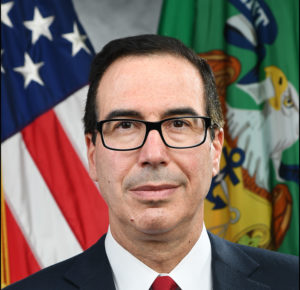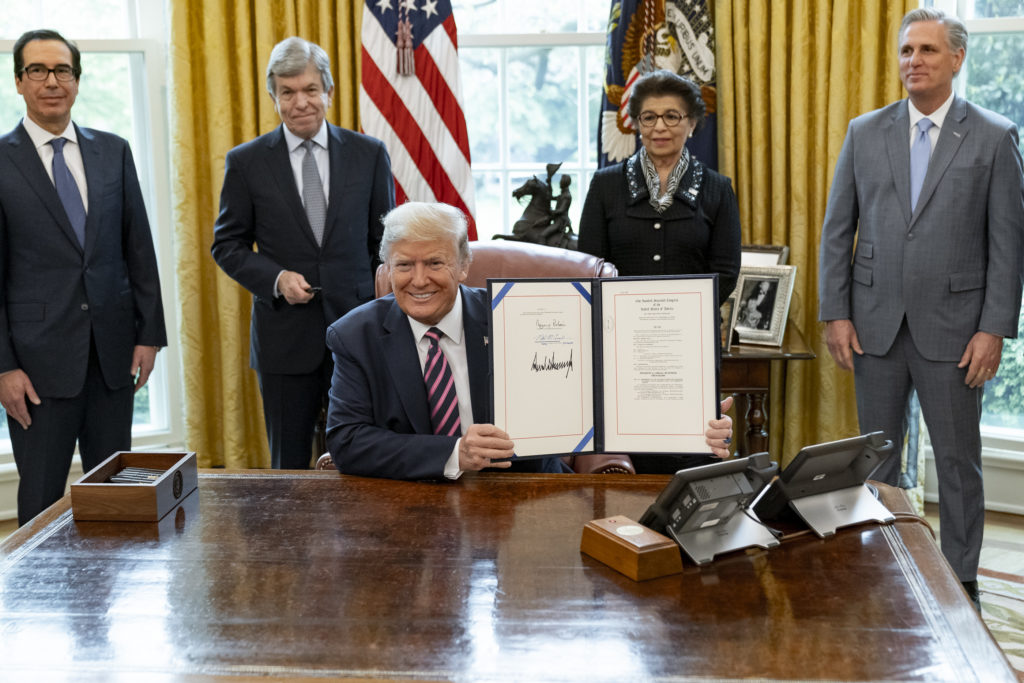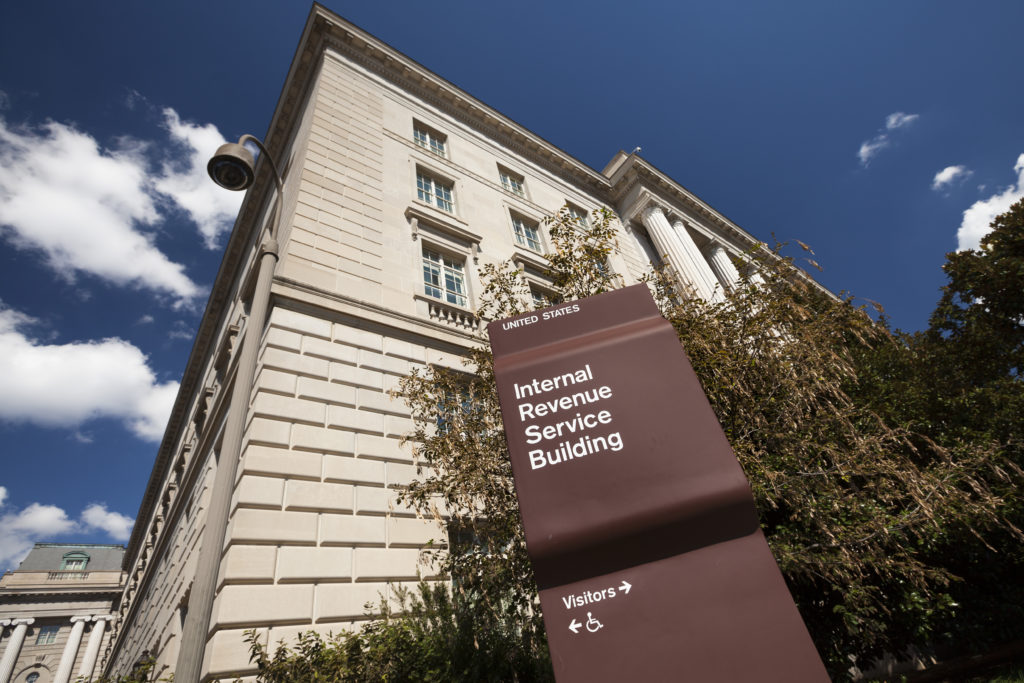
SBA announces review of PPP loans above $2M; IRS explains how to treat forgiven PPP dollars
By onAnnouncements | Business Practices | Education | Legal | Market Trends | Repair Operations
May 8 update: The SBA on May 6 said it has extended the “safe harbor” for businesses who probably shouldn’t have applied for PPP loans to pay the money back, no questions asked. The new repayment date is May 14.
The Small Business Administration and Department of the Treasury on Tuesday announced the SBA would review all Paycheck Protection Program loans of more than $2 million, “in addition to other loans as appropriate.”
“The Paycheck Protection Program is providing critical support to millions of small businesses and tens of millions of hardworking Americans,” Treasury Secretary Steven Mnuchin and SBA Administrator Jovita Carranza said in a joint statement Tuesday.
“We have noted the large number of companies that have appropriately reevaluated their need for PPP loans and promptly repaid loan funds in response to SBA guidance reminding all borrowers of an important certification required to obtain a PPP loan. To further ensure PPP loans are limited to eligible borrowers, the SBA has decided, in consultation with the Department of the Treasury, that it will review all loans in excess of $2 million, in addition to other loans as appropriate, following the lender’s submission of the borrower’s loan forgiveness application. Regulatory guidance implementing this procedure will be forthcoming.
“We remain fully committed to ensuring that America’s workers and small businesses get the resources they need to get through this challenging time.”
Question: Will SBA review individual PPP loan files?
Answer: Yes. In FAQ #31, SBA reminded all borrowers of an important certification required to obtain a PPP loan. To further ensure PPP loans are limited to eligible borrowers in need, the SBA has decided, in consultation with the Department of the Treasury, that it will review all loans in excess of $2 million, in addition to other loans as appropriate, following the lender’s submission of the borrower’s loan forgiveness application. Additional guidance implementing this procedure will be forthcoming. The outcome of SBA’s review of loan files will not affect SBA’s guarantee of any loan for which the lender complied with the lender obligations set forth in paragraphs III.3.b(i)-(iii) of the Paycheck Protection Program Rule (April 2, 2020) and further explained in FAQ #1.
This raises the question of the fairness of auditing and imposing a burden on other midsize businesses because of the actions of some high-profile actors. It also seems to introduce an arbitrary process.
The SBA hasn’t yet responded to a Thursday request for comment on such points and about the problem of waiting to audit companies until forgiveness phase: the company already has removed $2-$10 million from the program.
However, the Department of the Treasury has given borrowers who might have overemphasized their need for the money until May 7 to repay it without penalty. On April 23, it wrote in FAQ Question 31:
Question: Do businesses owned by large companies with adequate sources of liquidity to support the business’s ongoing operations qualify for a PPP loan?
Answer: In addition to reviewing applicable affiliation rules to determine eligibility, all borrowers must assess their economic need for a PPP loan under the standard established by the CARES Act and the PPP regulations at the time of the loan application. Although the CARES Act suspends the ordinary requirement that borrowers must be unable to obtain credit elsewhere (as defined in section 3(h) of the Small Business Act), borrowers still must certify in good faith that their PPP loan request is necessary. Specifically, before submitting a PPP application, all borrowers should review carefully the required certification that “[c]urrent economic uncertainty makes this loan request necessary to support the ongoing operations of the Applicant.” Borrowers must make this certification in good faith, taking into account their current business activity and their ability to access other sources of liquidity sufficient to support their ongoing operations in a manner that is not significantly detrimental to the business. For example, it is unlikely that a public company with substantial market value and access to capital markets will be able to make the required certification in good faith, and such a company should be prepared to demonstrate to SBA, upon request, the basis for its certification.
Lenders may rely on a borrower’s certification regarding the necessity of the loan request. Any borrower that applied for a PPP loan prior to the issuance of this guidance and repays the loan in full by May 7, 2020 will be deemed by SBA to have made the required certification in good faith.
Question: Do businesses owned by private companies with adequate sources of liquidity to support the business’s ongoing operations qualify for a PPP loan?
Answer: See response to FAQ #31.
Last week, Congress approved and Republican President Donald Trump signed another $310 billion for the PPP program. This and money returned by some larger companies might increase the likelihood of more collision repairers obtaining the forgiveable 1 percent, 2-year loans for around 2.5 times a shop’s monthly payroll.
Large companies got loans
Revelations of high-profile entities receiving such loans have embarrassed both the companies and the program.
For example, Bloomberg April 20 reported how Shake Shack returned $10 million, an incident which caught the attention of Treasury Secretary Steven Mnuchin. A White House transcript of an April 21 press conference reports:
SECRETARY MNUCHIN: … Now, let me make just one more comment on the program. We have over a million companies that have received this with less than 10 workers. So there is very broad participation in really small business. I will comment there have been some big businesses that have taken these loans. I was pleased to see that Shake Shack returned the money. We will be putting out some FAQs. There is a certification that people are making.
And I asked people — just make sure: The intent of this was for business that needed the money. We’ll put out an FAQ. But again, the intent of this money was not for big public companies that have access to capital. …
Q So, Mr. Secretary, are you going to request that those other companies — because obviously Shake Shack was not alone in being a big company that got money in this. Are you going to be asking — …
Q You’re going to ask them — …
Q — to return that money? …
SECRETARY MNUCHIN: Yeah, I would — …
SECRETARY MNUCHIN: And I just — I just want to clarify — …
SECRETARY MNUCHIN: — because certain people on the PPP may have not been clear in understanding the certification, so we will give people the benefit of the doubt. We’re going to put an FAQ out, explain the certification. If you pay back the loan right away, you won’t have liability to the SBA and to Treasury. But there are severe consequences for people who don’t attest properly to this certification.
On April 23, the Treasury Department reminded businesses of the rules and gave them the May 7 out. On April 24, Reuters reported that AutoNation said it would return $77 million in PPP loans and had used multiple tax IDs to apply for $266 million worth of loans.
On Monday, the Los Angeles Times reported that the Lakers basketball team announced they too would return a $4.6 million PPP loan. The next day, Mnuchin told “Squawk Box” he was “outraged” by the Lakers’ behavior, and if they hadn’t repaid the money, “they would have had liability,” according to CNBC.
Asked about the outrage over large companies who had taken PPP loans, Mnuchin told CNBC it was “inappropriate” for “most of these” to have taken the loans. He told the network the May 7 deadline would allow the government to “reprocess” the repaid money, which seems to suggest it’ll be available again for loans to smaller busineses.
He also mentioned the impending plan for the audits on companies receiving more than $2 million.
Small companies got loans too
PPP “Phase One” saw another more than $342 billion net dispensed in nearly 1.7 million loans made by 4,975 lenders, according to the SBA. The average loan came out to $206,000.
The SBA has not yet responded to our request on how much PPP money went to automotive repairers. Best we can say for now is that “Other Services” — the government’s NAICS category that contains automotive repairers but also many unrelated fields — saw 155,319 loans which combined added up to more than $17.7 billion as of April 16.
Nearly 26,000 loans exceeding $2 million had been issued by the program. These worked out to represent 1.57 percent of the loan applications approved, but nearly 28 percent of the loan dollars.
Accounting and taxes with PPP loans
Another bit of PPP news ought to be relevant to all borrowers.
The Internal Revenue Service in Notice 2020-32 explained that you can’t deduct a typically deductible expense if paying that expense allowed you to qualify for Paycheck Protection Program loan forgiveness.
The SBA forgives PPP loans proportional to the degree a company’s workforce remained intact and at the same pay. At least 75 percent of the borrowed amount must go to payroll, the remaining 25 percent can be used for certain eligible expenses like utilities and rent.
Normally, such usage might be deductible.
“In general, section 162 of the Code provides for a deduction for all ordinary and necessary expenses paid or incurred during the taxable year in carrying on any trade or business,” the IRS wrote. “Covered rent obligations, covered utility payments, and payroll costs consisting of wages and benefits paid to employees comprise typical trade or business expenses for which a deduction under section 162 of the Code generally is appropriate. Section 163(a) of the Code provides a deduction for certain interest paid or accrued during the taxable year on indebtedness, including interest paid or incurred on a mortgage obligation of a trade or business.”
But you can’t deduct “any amount otherwise allowable as a deduction to such taxpayer that is allocable to one or more classes of income other than interest (whether or not any amount of income of that class or classes is received or accrued) wholly exempt from the taxes imposed by subtitle A of the Code.”
The CARES Act excludes forgiven loan dollars from gross income, which makes it a “class of exempt income” that can’t be deducted, according to the IRS.
“Consistent with the purpose of section 265, this treatment prevents a double tax benefit,” the IRS explains.
So there you go. You can’t deduct it, but it’s not taxable income either.
“This notice provides guidance regarding the deductibility for Federal income tax purposes of certain otherwise deductible expenses incurred in a taxpayer’s trade or business when the taxpayer receives a loan (covered loan) pursuant to the Paycheck Protection Program under section 7(a)(36) of the Small Business Act (15 U.S.C. 636(a)(36)),” the IRS wrote. “Specifically, this notice clarifies that no deduction is allowed under the Internal Revenue Code (Code) for an expense that is otherwise deductible if the payment of the expense results in forgiveness of a covered loan pursuant to section 1106(b) of the Coronavirus Aid, Relief, and Economic Security Act (CARES Act), Public Law 116-136, 134 Stat. 281, 286-93 (March 27, 2020) and the income associated with the forgiveness is excluded from gross income for purposes of the Code pursuant to section 1106(i) of the CARES Act.”
Crowgey & Associates attorney Guy Crowgey on Friday explained the notice to a collision repairer, calling it “Very clear guidance.”
“Bottom line, the PPP forgiveness funds are NOT taxable income,” Crowgey wrote in an email the shop permitted us to quote. “But the Payroll expenses, Rent, and related expenses paid for by the PPP are NOT deductible. It is deemed as expenses not paid by your company, therefore, not deductible (cannot claim them).”
Crowgey also offered advice on keeping track of PPP spending.
“Please make sure you clearly break out your PPP expenses paid for several reasons: your bank will want to see what the funds were used for, and also, for tax prep purposes,” he wrote. “If you received $XXXXX in PPP funds, then your financial statements must also clearly show $XXXXX in PPP expenses. Each expense should be clearly labeled PPP. For Example: PPP-Officer Salary; PPP-Rent; PPP-Telephone. This will allow everyone clear view of what the funds were used for.”
The usual caveat: This article and analysis is informational and not intended as financial or legal advice. Consult with qualified professionals in both fields when making decisions about your own situation.
Correction: An earlier version of this article incorrectly stated the net amount disbursed in PPP loans as of April 16. The program had given out more than $342 billion. The article has since been updated to correct this.
More information:
CNBC, April 28, 2020
“US Treasury Secretary Mnuchin: It’s ‘outrageous’ the LA Lakers took a small business loan”
CNBC, April 28, 2020
Paycheck Protection Program FAQs
SBA, April 29, 2020
“Lakers pay back $4.6 million received from coronavirus rescue loan program”
Los Angeles Lakers, April 27, 2020
“Shake Shack Will Return Its Entire $10 Million U.S. Government Loan”
Bloomberg, April 20, 2020
White House news conference transcript
White House, April 21, 2020
“AutoNation returning $77 million in U.S. payroll assistance coronavirus relief loans”
Reuters, April 24, 2020
Correction: An earlier version of this story incorrectly described the forgivable amount of PPP loans.
Businesses can borrow about 2.5 months worth of payroll, up to $10 million. The SBA forgives the whole thing and interest if the money was spent during an eight-week period; it decreases the forgivable amount proportional to cuts in the company’s workforce or pay. At least 75 percent of the borrowed amount must go to payroll during those eight weeks, the remaining 25 percent can be used for certain eligible expenses including utilities and rent.
“The amount of loan forgiveness can be up to the full principal amount of the loan and any accrued interest,” the SBA wrote April 15. “That is, the borrower will not be responsible for any loan payment if the borrower uses all of the loan proceeds for forgiveable purposes described below and employee and compensation levels are maintained. The actual amount of loan forgiveness will depend, in part, on the total amount of payroll costs, payments of interest on mortgage obligations incurred before February 15, 2020, rent payments on leases dated before February 15, 2020, and utility payments under service agreements dated before February 15, 2020, over the eight-week period following the date of the loan. However, not more than 25 percent of the loan forgiveness amount may be attributable to non-payroll costs.”
The article has since been corrected to address this.
Images:
Treasury Secretary Steven Mnuchin. (Provided by Treasury Department)
From left, Secretary of the Treasury Steven Mnuchin; U.S. Sen. Roy Blunt, R-Mo.; Republican President Donald Trump; SBA Administrator Jovita Carranza; and House Minority Leader Kevin McCarthy, R-Calif., appear April 24, 2020, with Trump’s signature on House Resolution 266, the Paycheck Protection Program and Health Care Enhancement Act. The bill added billions more to the PPP program. (Shealah Craighead/White House)
The IRS building in Washington, D.C. (Pgiam/iStock)


